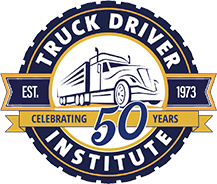What are the Steps to Becoming an Owner Operator Truck Driver
Have you ever wondered what the steps to becoming an owner-operator truck driver are? Being an owner operator is an exciting opportunity that more individuals are pursuing each year. We’re here to break it down for you one by one, from the very beginning on how to follow the steps to becoming an owner operator and making a new career for yourself.

The Steps to Becoming an Owner Operator Truck Driver
There are several steps to becoming an owner operator truck driver.
First, Get Your CDL License
The first step to becoming an owner operator truck driver is to become a truck driver. You will likely want to get a Class A Commercial Drivers License (CDL) as it will give you the most flexibility and opportunities than truck drivers with a Class B or Class C license. At the Truck Driver’s Institute, we offer a 15-day training program that allows you to get your CDL in just three weeks.
A Class CDL gives drivers the ability to operate any combination of vehicles, as long as the weight does not exceed 26,001 pounds. A Class A CDL also allows you to drive across state lines.
Second, Make Sure This is Really For You
Whether or not you’ve already been driving trucks for several years or are just starting, you may have wondered about the steps to becoming an owner operator truck driver. However, not everyone is cut out for the lifestyle. Writing pros and cons list can help you assess whether this is the right step for your career
Pros
There are many pros to being an owner operator truck driver. You get to be your boss, which means you have more control over your personal life. When you make your schedule, it’s easier to make sure you are available for important personal or professional events.
Owner operators have also reported making more than their average counterparts. As of November 2022, owner operators saw a base pay of over $150,000.
Cons
When considering the steps to becoming an owner operator truck driver, you have to take in the complete picture. Being your own boss means dealing with a lot of administrative issues, like signing up for health insurance, filing paperwork, and dealing with governmental requirements. Sometimes, you may have to sacrifice benefits like saving for retirement.
Another big part of being an owner operator is that the money made is based completely on time spent on the road. This is the double-edged sword of being your own boss – you get to make your hours, but things like vacation pay usually aren’t possible, especially if you’re a sole proprietorship or individual LLC.
Third, Become a Business
Becoming an owner operator means becoming your own business. If it’s just you running the business, you will likely want to become a sole proprietorship or limited liability company (LLC).
Sole Proprietorship
A sole proprietor is a single-person business, meaning no other employees. This means you get to make every decision, without input from a board or partners. However, it also means all of the business – whether it goes well or badly – is tied to you, so personal assets could become business losses.
Limited Liability Company
As an LLC, you get the same pass-through taxation benefits that a sole proprietorship receives from the government, but without the personal risk. With this setup, your personal assets are able to be protected from business failings. You can also have a single-member LLC, but you also have the option to form a multiple-member or partnership LLC.
Fourth, Apply for Your USDOT Number
Your United States Department of Transportation (or USDOT) number is given to you by the Federal Motor Carrier Safety Administration. A USDOT number is required within 39 of the 50 states for all companies that operate commercial vehicles.
Fifth, Figure Out Your Truck
One important decision will be whether you want to buy or lease a truck. While buying is likely the best step to becoming an owner operator, it does mean a significant down payment upfront that not everyone can afford. However, if you can make the payment or get a loan, it’s better to pay it off over time until you have full equity.
Either way, you will be required to have liability coverage on your truck insurance. FMCSA requires all general carriers to have a minimum of $7500,000 in liability coverage, and typically shippers and freight brokers require individuals to have around $1 million in coverage on their truck.
Sixth, Figure Out Your Business Plan
One of the lesser-known steps to becoming an owner operator truck driver is that once you form your business, you will have to submit a business plan. Typically, business plans are split into six different sections:
The Financial Plan
The financial plan should contain profits, losses, cost projects, revenue projects, and any investments or debts taken on to begin the business.
List of Staff
If you have a partner or staff, they will need to be listed.
Goals and Milestone Markers
Having listed goals and milestones will give you a way to gauge where your business growth goals are and how accurate estimates are over time. These don’t have to be set in stone but just outlines of how you want your business to progress.
The Marketing Plan
The marking plan should include information on how you’ll get customers, whether it’s through a website, networking groups, or other resources.
A Company Overview
This overview should showcase who you are, how you began your business, and how it will be successful.
Executive Summary
Finally, the executive summary is all the basics – what the business does, where the business is located, and who the business will serve.
Understanding the Steps to Become an Owner Operator Truck Driver with TDI
These are just the first steps to becoming an owner operator truck driver. With TDI, we can help individuals get their CDL license and support them in their work long after graduation. Learn more about TDI and contact us today.
Get Started
Get your Class A CDL in our friendly, supportive CDL training program. TRAIN with experienced instructors – multiple good-paying, secure job choices with benefits available for eligible graduates. EARN $700 – $1000+ / week to start as a truck driver. Get started today by filling out the form below. We look forward to hearing from you!



